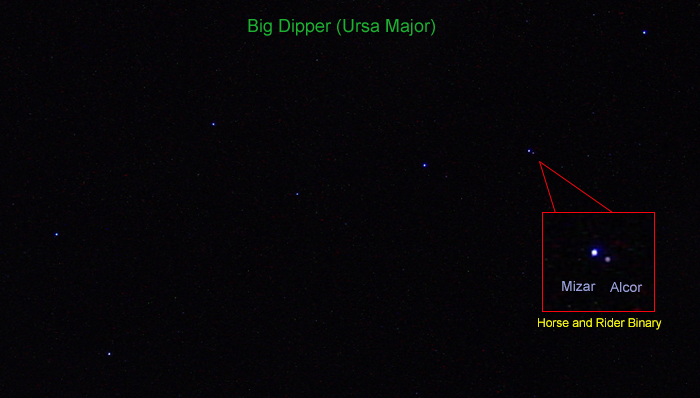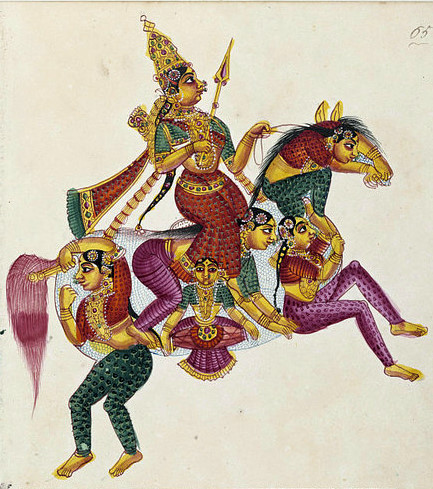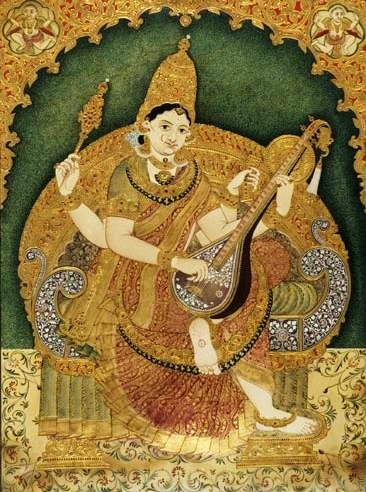|
Kumārasambhava
''Kumārasambhavam'' ''( ) (transl. - "The Birth of Kumāra")'' is an epic poem by Kālidāsa. It is widely regarded as the finest work of Kalidasa as well as the greatest kāvya poem in Classical Sanskrit. The style of description of spring set the standard for nature metaphors pervading many centuries of Indian literary tradition. ''Kumārasaṃbhavam'' basically talks about the birth of Kumāra ( Kārtikeya), the son of Shiva (Śiva) and Pārvatī (Umā). The period of composition is uncertain, although Kalidasa is thought to have lived in the 5th century. A fierce debate has raged over the question as to whether the whole of the seventeen cantos came was penned by Kalidasa. Vitthala Śastrin, who in 1866, published Cantos VIII to XVII in ''The Paņdit'', took them as genuine work of Kalidasa while scholars like Hermann Jacobi took Cantos IX to XVII as a later interpolation. Stylistic inferiority of these cantos, rarity of manuscripts, silence on the part of early commentator ... [...More Info...] [...Related Items...] OR: [Wikipedia] [Google] [Baidu] |
Kālidāsa
Kālidāsa (, "Servant of Kali (god), Kali"; 4th–5th century CE) was a Classical Sanskrit author who is often considered ancient India's greatest poet and playwright. His plays and poetry are primarily based on Hindu Puranas and philosophy. His surviving works consist of three plays, two epic poems and two shorter poems. Much about his life is unknown except what can be inferred from his poetry and plays. His works cannot be dated with precision, but they were most likely authored before the 5th century CE during the Gupta Empire, Gupta era. Kalidas is mentioned as one of the seven Brahma avatars in Dasam Granth, written by Guru Gobind Singh. Early life Scholars have speculated that Kālidāsa may have lived near the Himalayas, in the vicinity of Ujjain, and in Kalinga (historical region), Kalinga. This hypothesis is based on Kālidāsa's detailed description of the Himalayas in his ''Kumārasambhava, Kumārasambhavam'', the display of his love for Ujjain in ''Meghadūta'' ... [...More Info...] [...Related Items...] OR: [Wikipedia] [Google] [Baidu] |
Kāvya
Kāvya (Devanagari: :wikt:काव्य#Devanagari, काव्य, IAST: ''kāvyá'') refers to the Sanskrit literary style used by Kingdoms of Ancient India, Indian court poets flourishing between c. 200 BCE and 1200 CE. This literary style, which includes both poetry and prose, is characterised by abundant usage of figure of speech, figures of speech such as metaphors, similes, and hyperbole to create its characteristic emotional effects. The result is a short lyrical work, court epic, narrative or dramatic work. ''Kāvya'' can refer to the style or the completed body of literature. Aśvaghoṣa (c. 80–150 CE), a philosopher and poet considered the father of Sanskrit drama, is attributed with first using the term. Early kāvya Although very little literature in the kāvya style written before the time of Kālidāsa (5th century CE) survives, it can be assumed from quotations in Patanjali, Patañjali's grammatical treatise the Mahābhāṣya (2nd century BCE), as well a ... [...More Info...] [...Related Items...] OR: [Wikipedia] [Google] [Baidu] |
Arundhati (Hinduism)
Arundhati () is the wife of the sage Vasishtha, one of the seven sages (Saptarshi) of Hinduism. Etymology The name in Sanskrit literally means 'washed by the rays of sun', from 'sun rays', and , 'washed'. Legend Arundhati's birth and life are mentioned in various Hindu scriptures. The birth of Arundhati is found in the Shiva Purana and Bhagavata Purana. The instruction by Brahma to Arundhati is described in the Uttara Kanda of the Ramcharitmanas. The rivalry between Vishvamitra and Vasishtha which leads to the death of her hundred sons is described in the Balakanda of Valmiki's Ramayana. The Mahabharata and several Brahmana works describe her sons, including Shakti, and grandson Parashara. Arundhati's meetings with Sita and Rama are mentioned in the Ramayana, Ramcharitmanas and Vinaya Patrika.Rambhadracharya 1994, pp. ''iii—vi''. Her role in pleading Shiva to marry Parvati is described in the sixth canto of Kumarasambhava of Kalidasa.Kale, pp. 197-199 As per the Bhag ... [...More Info...] [...Related Items...] OR: [Wikipedia] [Google] [Baidu] |
Rati
Rati (, ) is the Hinduism, Hindu Devi, goddess of List of love and lust deities, love, carnal desire, lust, passion, and sexual pleasure. Usually described as the daughter of ''Prajapati'' Daksha, Rati is the female counterpart, the chief consort and the assistant of Kamadeva, Kama (Kamadeva), the god of love. A constant companion of Kama, she is often depicted with him in legend and temple sculpture. She also enjoys worship along with Kama. The Hindu scriptures stress Rati's beauty and sensuality. They depict her as a maiden who has the power to enchant the God of Love. When the deity Shiva burns her husband to ashes, it is Rati, whose beseeching or penance, leads to the promise of Kama's resurrection. Often, this resurrection occurs when Kama is reborn as Pradyumna, the son of Krishna and Rukmini. Rati – under the name of Mayavati – plays a critical role in the upbringing of Pradyumna, who is separated from his parents at birth. She acts as his nanny, as well as his lover, ... [...More Info...] [...Related Items...] OR: [Wikipedia] [Google] [Baidu] |
Sati (Hindu Goddess)
Sati (, , , ), also known as Dakshayani (Sanskrit: , IAST: ''Dākṣāyaṇī'', lit. 'daughter of Daksha'), is the Hindu goddess of marital felicity and longevity, and is worshipped as an aspect of the mother goddess Shakti. Sati was the first wife of Shiva, the other being Parvati, who was Sati's reincarnation after her death. The earliest mentions of Sati are found in the time of the Ramayana and the Mahabharata, but details of her story appear in the Puranas. Legends describe Sati as the favourite child of Daksha, who marries Shiva against her father's wishes. Later, when Daksha organises a yajna (fire-sacrifice) in which he doesn't invite her and her husband, Sati goes to attend it, only to be humiliated by her father. She then immolates herself to protest against him, and uphold the honour of her husband. In Hinduism, both Sati and Parvati, successively play the role of bringing Shiva away from ascetic isolation into creative participation with the world. Sati's story pla ... [...More Info...] [...Related Items...] OR: [Wikipedia] [Google] [Baidu] |
Saraswati
Saraswati (, ), also spelled as Sarasvati, is one of the principal Devi, goddesses in Hinduism, revered as the goddess of knowledge, education, learning, arts, speech, poetry, music, purification, language and culture. Together with the goddesses Lakshmi and Parvati, she forms the trinity of chief goddesses, known as the Tridevi. Sarasvati is a pan-Indian deity, venerated not only in Hinduism but also in Jainism and Buddhism.Ludvik (2007), pp. 1, 11. She is one of the prominent goddesses in the Historical Vedic religion, Vedic tradition (1500 to 500 BCE) who retains her significance in later Hinduism. In the Vedas, her characteristics and attributes are closely connected with the Sarasvati River, making her one of the earliest examples of a Rivers in Hinduism, river goddess in Indian tradition. As a deity associated with a river, Sarasvati is revered for her dual abilities to purify and to nurture fertility. In later Vedic literature, particularly the Brahmanas, Sarasvati is i ... [...More Info...] [...Related Items...] OR: [Wikipedia] [Google] [Baidu] |
Gana
The word ( ) in Sanskrit and Pali means "flock, troop, multitude, number, tribe, category, series, or class". It can also be used to refer to a "body of attendants" and can refer to "a company, any assemblage or association of men formed for the attainment of the same aims". The word "gana" can also refer to councils or assemblies convened to discuss matters of religion or other topics. In Hinduism, the s are attendants of Shiva and live on Kailasha, Mount Kailash. Ganesha was chosen as their leader by Shiva; the deity's title is or , meaning, "lord or leader of the ". Literature Vedas The term gana is employed in the ''Rigveda'' in reference to the Maruts: Mahabharata Chapter 108 of the ''Shanti Parva'' of the ''Mahabharata'' describes a discussion between Yudhishthira and Bhishma regarding the strength of the ganas, how they defend themselves from disunion, the subjugation of their enemies, and forging friendships. Bhishma's answers to these questions are recorde ... [...More Info...] [...Related Items...] OR: [Wikipedia] [Google] [Baidu] |
Nandi (Hinduism)
Nandi (), also known as Nandikeshvara or Nandideva, is the bull ''vahana'' (mount) of the Hindu god Shiva. He is also the guardian deity of Kailash, the abode of Shiva. Almost all Shiva temples display stone images of a seated Nandi, generally facing the main shrine. Etymology The Sanskrit word ''nandi'' () means happy, joy, and satisfaction, the properties of divine guardian of Shiva-Nandi. The application of the name Nandi to the bull (Sanskrit: ''Vṛṣabha'') is a development of recent syncretism of different regional beliefs within Shaivism. The name Nandi was widely used instead for an anthropomorphic door-keeper of Kailash, rather than his mount in the oldest Shaivite texts in Sanskrit, Tamil, and other Indian languages. Siddhanta texts distinguish between Nandi and ''Vṛṣabha''. Legend Nandi is described as the son of the sage Shilada. Shilada underwent severe penance to have a boon– a child with immortality and blessings of Shiva, and received Nandi as hi ... [...More Info...] [...Related Items...] OR: [Wikipedia] [Google] [Baidu] |
Vasishtha
Vasishtha (, ) is one of the oldest and revered Vedic rishis or sages, and one of the Saptarishis (seven great Rishis). Vasishtha is credited as the chief author of Mandala 7 of the ''Rigveda''. Vasishtha and his family are mentioned in Rigvedic verse 10.167.4, other Rigvedic mandalas and in many Vedic texts. His ideas have been influential and he was called the first sage of the Vedanta school of Hindu philosophy by Adi Shankara. The '' Yoga Vasishtha'', ''Vasishtha Samhita'', as well as some versions of the '' Agni Purana'' and ''Vishnu Purana'' are attributed to him. He is the subject of many stories, such as him being in possession of the divine cow Kamadhenu and Nandini her child, who could grant anything to their owners. He is famous in Hindu stories for his legendary conflicts with sage Vishvamitra. In the Ramayana, he was the family priest of the Raghu dynasty and teacher of Rama and his brothers. Etymology Vasishtha is also spelled as ' and is Sanskrit for "most ex ... [...More Info...] [...Related Items...] OR: [Wikipedia] [Google] [Baidu] |
Gaurishankar
Gaurishankar (also Gauri Sankar or Gauri Shankar; ; Sherpa language, Sherpa: Jomo Tseringma), a mountain in the Nepal Himalayas, is the second highest peak of the Rolwaling Himal, behind Melungtse (7,181 m). The name comes from the Hindu goddess Gauri, a manifestation of Parvati, and her consort Shiva, Shankar, denoting the sacred regard it is afforded by the people of Nepal. The Sherpa people, Sherpas name the mountain as Jomo Tseringma. The Nepal Standard Time (GMT+05:45) is based on the meridian of this mountain peak. Location Gaurishankar lies near the western edge of the Rolwaling Himal, about northeast of Kathmandu. (It is almost directly between Kathmandu and Mount Everest, and is visible from Kathmandu.) To the west of the peak lies the valley of the Bhote Kosi, the western boundary of the Rolwaling Himal. To the north lies the Menlung Chu, which separates it from its sister peak Melungtse. To the south lies the Rolwaling Chu, which leads up to the Tesi Lapcha pass, ... [...More Info...] [...Related Items...] OR: [Wikipedia] [Google] [Baidu] |
Kamadeva
Kamadeva (, ), also known as Kama, Manmatha, and Madana is the Deva (Hinduism), Hindu god of Eroticism, erotic love, carnal desire, attraction, pleasure and beauty, as well as the personification of the concept of ''kāma''. He is depicted as a handsome young man decked with ornaments and flowers, armed with a bow of sugarcane and shooting arrows of flowers. He often portrayed alongside his consort and female counterpart, Rati. Kamadeva's origins are traced to the verses of the ''Rig Veda'' and ''Atharva Veda'', although he is better known from the stories of the Purana, ''Puranas''. The ''Atharva Veda'' regards Kamadeva as a powerful god, the wielder of the creative power of the universe, also describing him to have been "born at first, him neither the gods nor the fathers ever equaled". In the ''Puranas,'' Kamadeva is generally mentioned as a ''manasputra, manasaputra'' (mind-born son) of the creator god Brahma. His most popular myth is his incineration by the god Shiva's thi ... [...More Info...] [...Related Items...] OR: [Wikipedia] [Google] [Baidu] |
Brahma
Brahma (, ) is a Hindu god, referred to as "the Creator" within the Trimurti, the triple deity, trinity of Para Brahman, supreme divinity that includes Vishnu and Shiva.Jan Gonda (1969)The Hindu Trinity, Anthropos, Bd 63/64, H 1/2, pp. 212–226.Jan Gonda (1969)The Hindu Trinity, Anthropos, Bd 63/64, H 1/2, pp. 218–219. He is associated with creation, knowledge, and the ''Vedas''. Brahma is prominently mentioned in Creation myth, creation legends. In some ''Puranas'', he created himself in a golden embryo known as the Hiranyagarbha. Brahma is frequently identified with the Rigvedic deities, Vedic god Prajapati.;David Leeming (2005), The Oxford Companion to World Mythology, Oxford University Press, , page 54, Quote: "Especially in the Vedanta Hindu Philosophy, Brahman is the Absolute. In the Upanishads, Brahman becomes the eternal first cause, present everywhere and nowhere, always and never. Brahman can be incarnated in Brahma, in Vishnu, in Shiva. To put it another way, eve ... [...More Info...] [...Related Items...] OR: [Wikipedia] [Google] [Baidu] |








